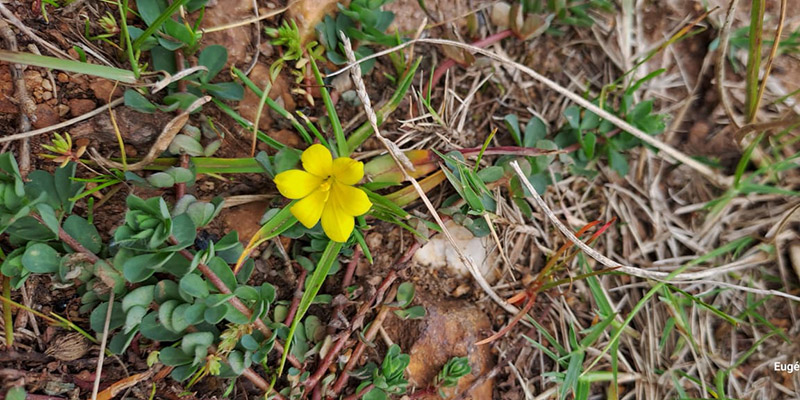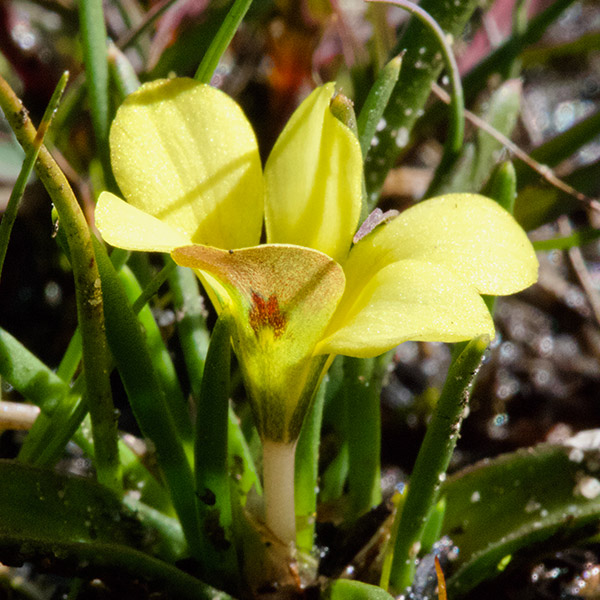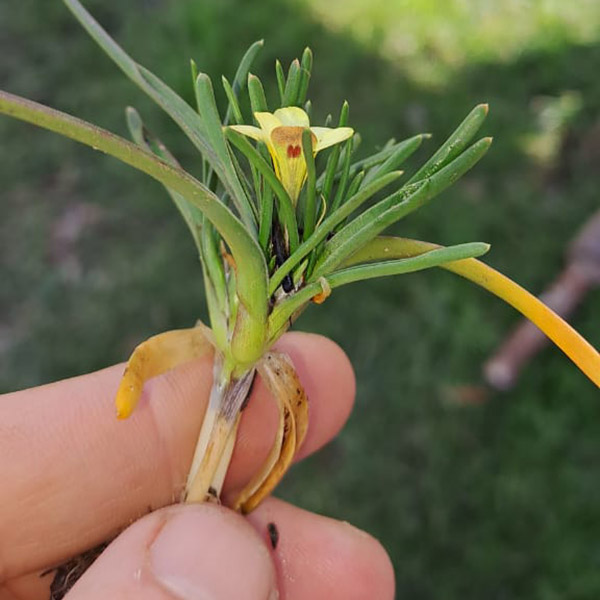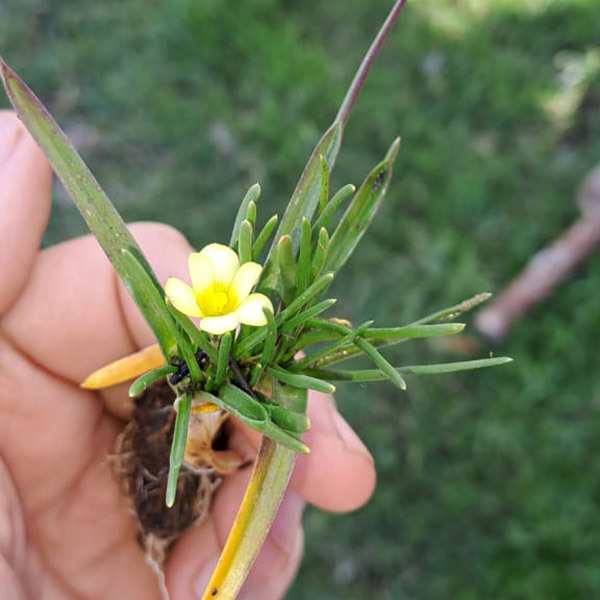
Little did our Conservation Manager Eugéne Hahndiek know that he’d found something very special when he saw a small but pretty fynbos flower in the road on the Nuwejaars Wetlands Special Management Area, close to Africa’s southernmost tip.
He photographed it in August 2022 and posted it on iNaturalist, the app whereby citizen scientists record observation of biodiversity across the world. At the time, he identified it as a common Moraea species, known as Moraea galaxia. And then forgot all about it.
Until this year, when Eugéne’s photograph caught the eye of scientist Dr John Manning. He identified the observation as a Moraea species that the Custodians of Rare and Endangered Wildflowers (CREW) had been searching for. In July, after being informed by Dr Manning, the CREW team visited the original site to search for it, but didn’t find it in flower. However, the team returned in August this year and this time CREW’s Sharndre Heuvel, with luck, found the species at a new locality.

Eugéne had found a species that was believed to be extinct – known as Moraea minima, or Mini Galaxy.
It was last officially seen in 1981, and was at the time known from only one location that was heavily invaded by invasive alien plants. It only occurs on Agulhas Sand Fynbos, a Critically Endangered vegetation type.
However, since this investigation started into the species, Eugéne and the NWSMA team, along with CREW, have found two populations of Moraea minima. According to Ismail Ebrahim, CREW’s Project Manager for the Cape Floristic Region, “This rediscovery illustrates the value of regular monitoring and encouraging people to participate in programmes like CREW and post their findings on iNaturalist. This is a critical step for understanding the exceptionally special plants we have and what steps have to be taken to conserve these species.”


Eugéne added, “It seems that this special species is difficult to find because it’s quite finnicky. What we’ve found is that it only flowers in spring for a few hours after it has rained. Then the flowers disappear, until the following rains come. The other challenge is that these plants seem to often grow in slightly precarious spaces, for example road verge or in the middle of a road. That’s why we need to know where they are, to plan how to protect them.”




How the NWSMA is protecting these species
Thanks to funding support from the Table Mountain Fund (TMF) (an associated Trust of WWF South Africa), as well as WWF South Africa, the Mapula Trust and Hans Hoheisen Charitable Trust, Moraea minima and other species of conservation concern, such as the newly discovered Nuwejaars Fire Lily (Cyrtanthus novus-annus), can be monitored and understood better in the Nuwejaars Wetlands SMA, in order to be protected.
With support from the TMF, botanical expert Geoff Nichols is undertaking botanical assessments across fynbos landscapes in the NWSMA. As it is, he has covered 13 342 hectares on foot in the past year, documenting the species he finds. Between Geoff and Eugéne, a number of very special species have been found here, including Erica oblongiflora, Erica penduliflora and Phylica parvula – three Endangered species on the SANBI Red List, as well as the Critically Endangered Erica berzeliodes.
Farmers have signed title deed restrictions
The Nuwejaars Wetlands Special Management Area plays a vital role in protecting key habitats. This conservation area, made up of 26 farms, covers 47 000 hectares, half of which is natural land and wetlands. It’s home to nearly 50% of all remaining Agulhas Sand Fynbos and 20% of Agulhas Limestone Fynbos in the world. Both of these are Critically Endangered. Around 40% of remaining Endangered Elim Ferricrete Fynbos also occurs here. Farmers have signed title deed restrictions in order to protect the land in perpetuity.
Botanical expert Geoff Nichols explains his role in finding species of conservation concern, and helping to protect them in the NWSMA.
Our sincere thanks to the Table Mountain Fund, WWF South Africa, Mapula Trust and the Hans Hoheisen Charitable Trust.




